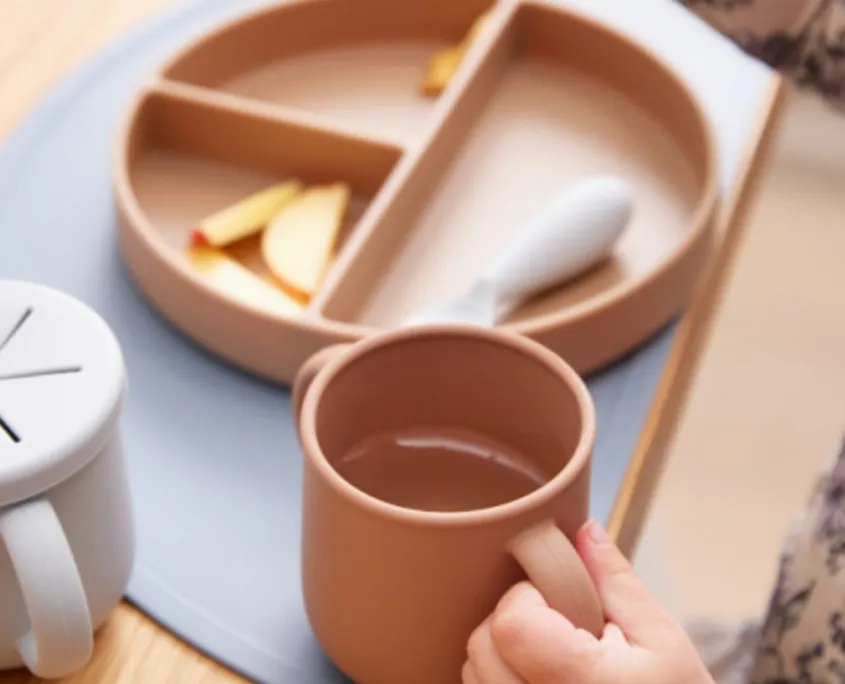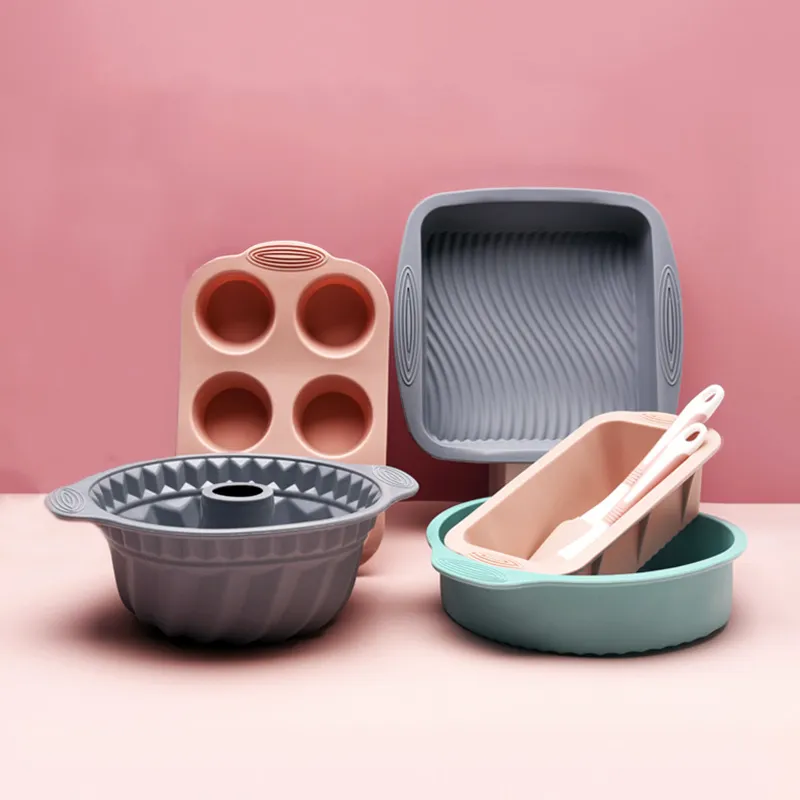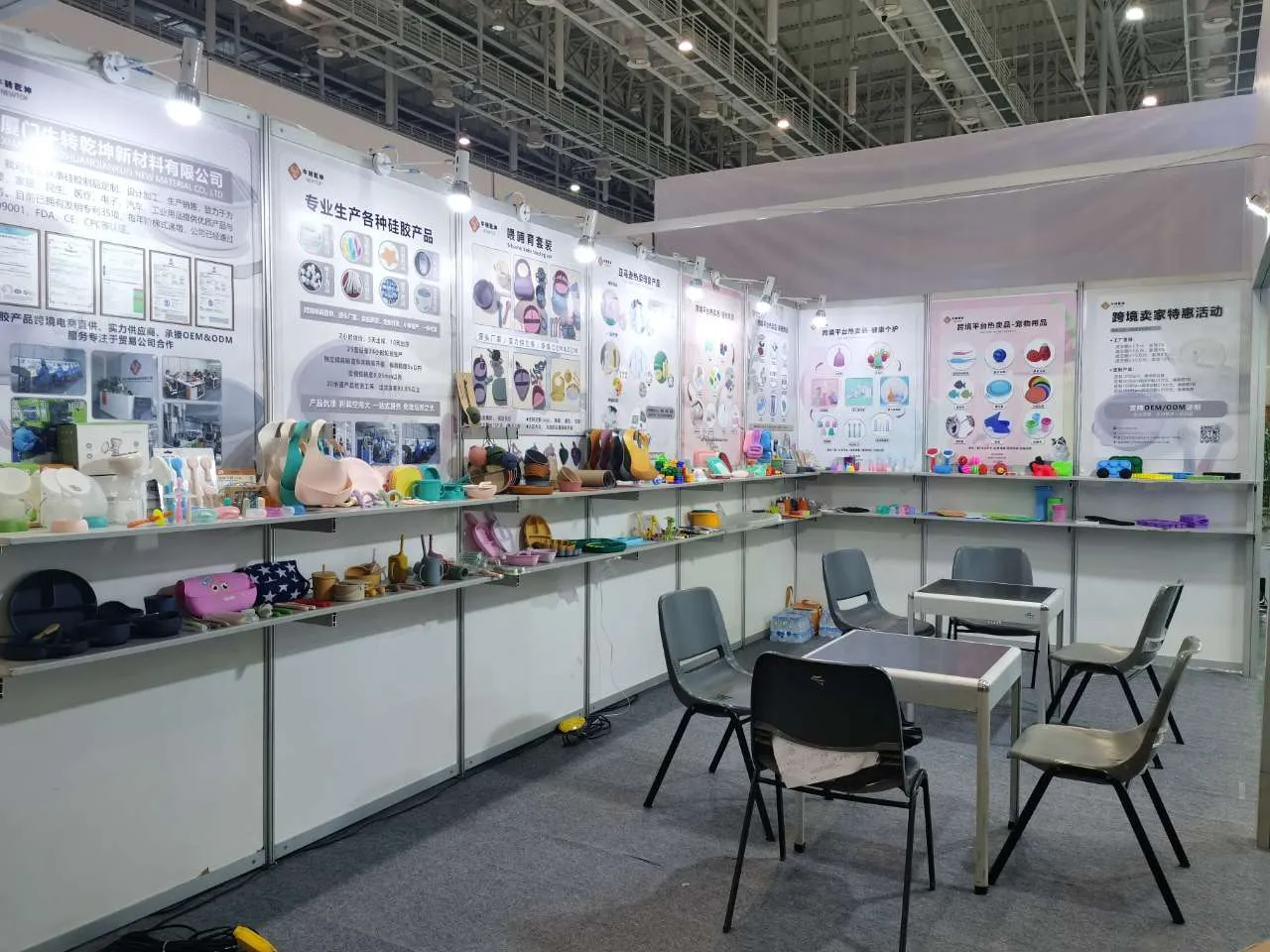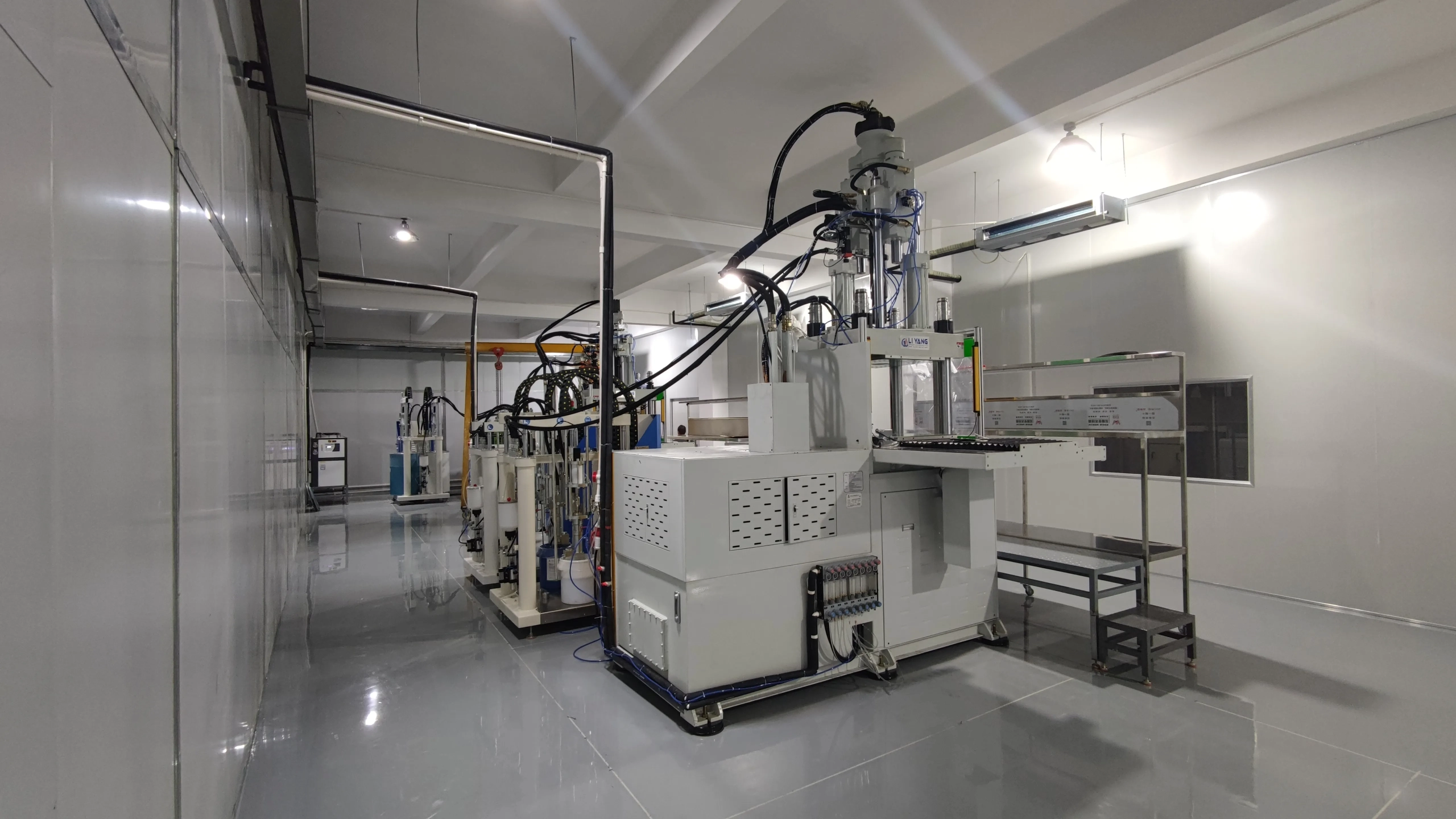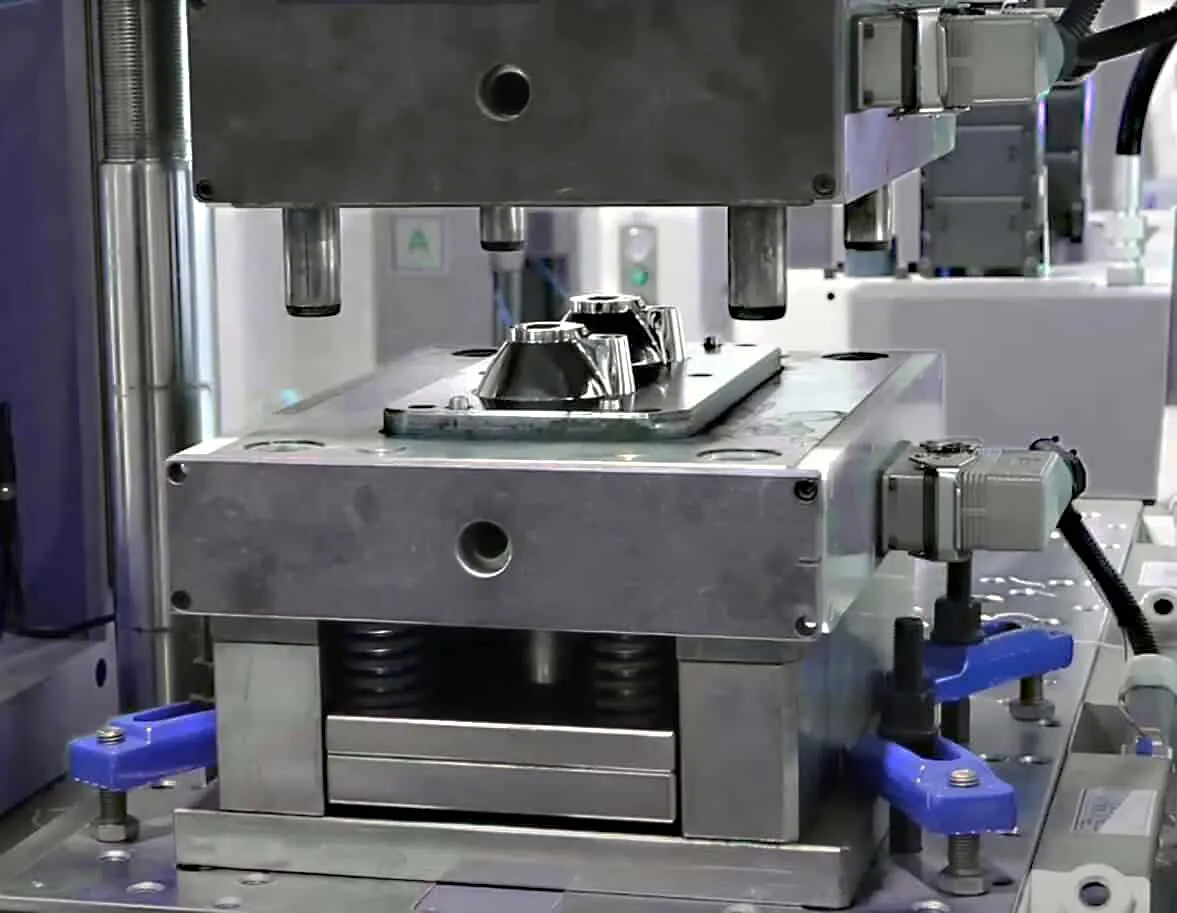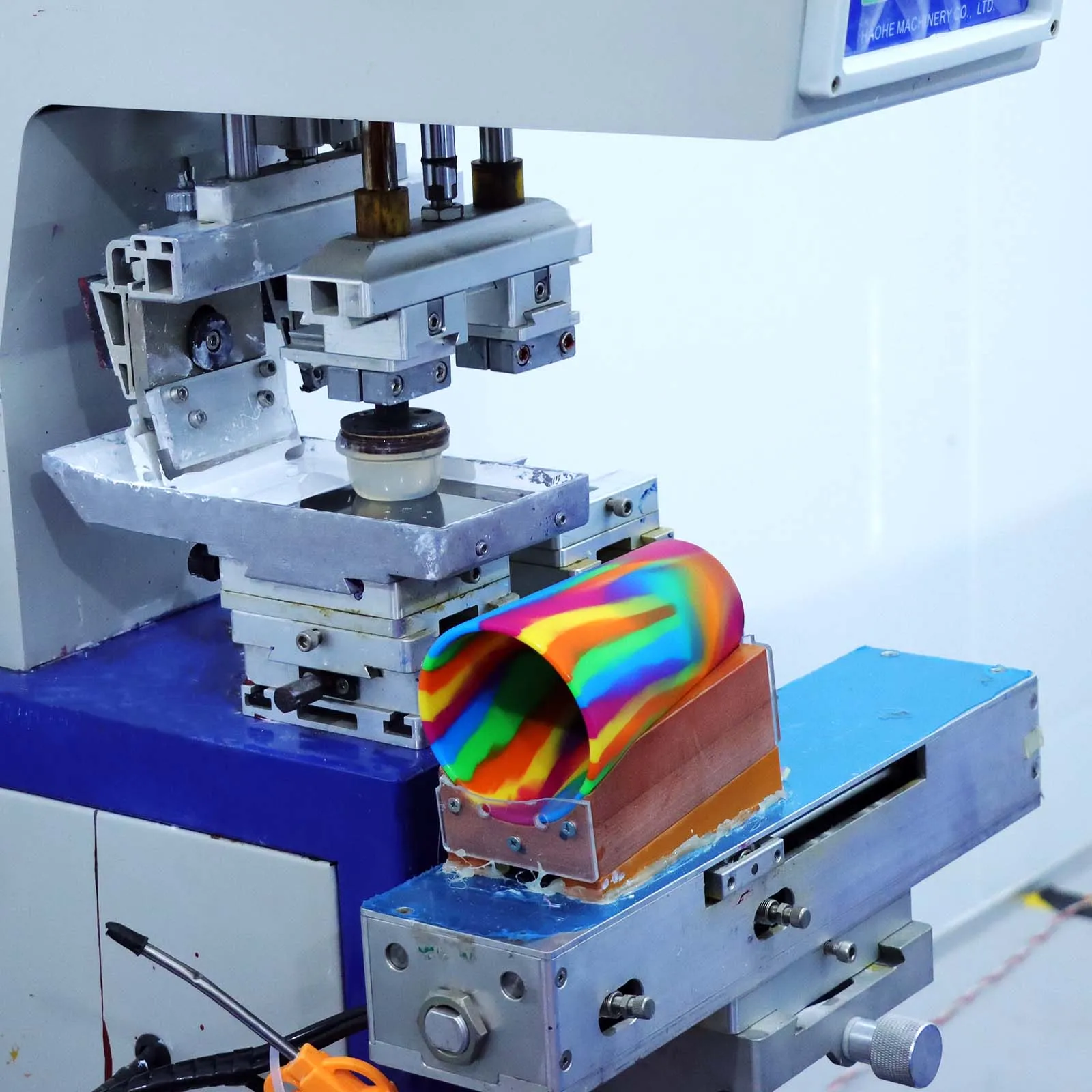Would you like to freely customize the color of your brand’s silicone products? Undoubtedly, color can bring significant differentiation to your products. The color of silicone needs to be achieved by the manufacturer using a color mixing process. This is a nuanced process, blending art and technology to meet the specific aesthetic and functional needs of diverse industries.
This article aims to provide a comprehensive overview of the silicone coloring process. It will cover the selection of base materials, the intricacies of color matching, the specifics of the mixing process, and the crucial steps of quality control.
Silicone Material Types and Selection
Before mixing colors, we must first have a basic understanding of silica gel raw materials.
Liquid Silicone Rubber (LSR) vs. Solid Silicone:
LSR, known for its fluidity, suits injection molding for complex designs. Its consistency aids in achieving even color distribution, a key for intricate items. Solid silicone, firmer and more resilient, is used in extrusion and molding, ideal for uniform coloration in durable products like gaskets and keypads.
Applications and Characteristics:
LSR excels in applications where precise color matching is needed, like in medical devices or kitchenware. Solid silicone is preferred for industrial items where color integrity under physical stress matters, such as in seals and industrial parts.
Selection Criteria and Considerations:
Choosing between LSR and solid silicone depends on the product’s design and function. LSR is optimal for detailed items needing accurate color representation. Solid silicone is better for items requiring color consistency in tough conditions. This decision directly affects the coloring process, impacting the final product’s look and performance.
2. The Color Matching Process
Color matching is also one of the preliminary steps of color mixing.
Pigment Selection Principles:
Selecting the right pigment is the first step in silicone coloring. The pigment is typically made from inorganic or organic compounds. Inorganic pigments, known for their heat resistance and stability, are ideal for maintaining color in high-temperature applications. Organic pigments offer a broader range of bright and vivid colors but may require careful handling due to their sensitivity to heat and light. In the case of translucent or transparent silicone, dyes, which are soluble and blend seamlessly, are preferred over pigments.
Pigments should be purchased from trusted suppliers. Ensure It is compatible with silicone, heat-resistant, and non-reactive to maintain color integrity. The choice of pigment or dye significantly influences the final shade and consistency of the colored silicone.
Techniques and Tools for Color Matching:
Colorimeters are commonly utilized in the silicone coloring process. These devices measure light absorbance at specific wavelengths, aiding in the accurate replication of the desired color in silicone products. They are particularly useful for maintaining consistent color in different production batches.
Spectrophotometers offer a more comprehensive analysis by examining the entire spectrum of light reflected by a pigment. This information is crucial for predicting how a color will appear under varying lighting conditions, an essential factor for products exposed to different environmental settings.
Software-based color-matching systems complement these instruments. They simulate how various pigments will blend in silicone, providing a preview of the final color before physical mixing. This method streamlines the process by reducing the reliance on physical trials, saving both time and resources.
In addition to these tools, you can still rely on visual assessment. Despite technological advancements, the human eye’s evaluation is often used for the final color approval, particularly in applications where exact color matching is necessary to align with specific design requirements or aesthetic preferences.
Common Issues:
·Issue 1: Pigment Dispersion Issues
Uneven dispersion of pigments can lead to streaks or blotches in the final product.
Solution: Utilizing high-shear mixers and proper dispersion techniques helps ensure uniform pigment distribution. Selecting pigments with appropriate particle sizes for the specific silicone type can mitigate this issue.
·Issue 2: Color Shift During Curing
The curing process can alter the perceived color, leading to discrepancies between the intended and final hues.
Solution: Conducting pre-curing tests and adjusting pigment concentrations can help anticipate and correct these shifts. Using stabilizers or additives that minimize color changes during curing is also effective.
·Issue 3: Environmental Impact on Color Stability
Factors like UV exposure and temperature fluctuations can cause color fading or changes over time.
Solution: Choosing pigments with high lightfastness and thermal stability. For silicone products exposed to harsh environments, incorporating UV stabilizers and antioxidants in the formulation can prolong color longevity.
·Issue 4: Replicating Colors Across Different Batches
Achieving the same color in subsequent production batches can be challenging.
Solution: Maintaining strict control over pigment ratios and production conditions. Documenting and adhering to precise formulations and processes ensures batch-to-batch consistency.
Weighing and Mixing Silicone with Pigments
Determining the Ratio of Silicone to Pigment
Start by identifying the desired color intensity and the base color of the silicone. For intense colors, increase the pigment ratio, typically ranging between 0.1% to 3% of the total silicone weight. Lighter shades require a lower percentage of pigment.
Use digital scales to measure the pigment accurately. This ensures that the color remains consistent, especially in large-scale production.
Conduct small-scale tests to refine the pigment-to-silicone ratio. Adjust the amount based on the pigment’s opacity and tinting strength, as different pigments may require varying quantities to achieve the same color intensity.
Document the ratios and results of these tests. This record-keeping facilitates consistency in future batches, allowing for easy replication of the same color.
Basics of the Mixing Process
Adding the measured pigment to the silicone base. Ensure that the pigment is evenly distributed across the silicone for consistent color blending.
Use a high-speed mixer or stirrer, which effectively disperses the pigment throughout the silicone. Adjust the mixing speed and duration based on the silicone’s viscosity and the quantity being mixed. For instance, thicker silicones may require longer mixing times at higher speeds.
Monitor the mixture during the process. Look for any streaks or unevenness in color, which indicate that further mixing is needed. Achieving a uniform color is a sign that the pigment is thoroughly integrated.
After mixing, inspect a small sample under different lighting conditions to verify color consistency. This step helps identify any discrepancies before proceeding to large-scale production.
Clean the mixing equipment thoroughly after each batch to prevent cross-contamination of colors in subsequent mixings. This is especially important when working with multiple color batches.
Differences in Mixing Liquid and Solid Silicone
For Liquid Silicone Rubber (LSR), add the pigment to the silicone before injection molding. A high-shear mixer is ideal for this. It blends the pigment evenly without harming the silicone.
In solid silicone, mix the pigment during milling. Use a two-roll mill for this task. It mixes and conditions the silicone, ensuring color consistency.
Adjust milling time and pressure based on the silicone’s hardness and desired color intensity. Mill until the color is uniform throughout.
After milling, do a small test run with new color mixes. Create a sample to check the color meets standards.
With LSR, mix thoroughly but avoid trapping air. For solid silicone, focus on even pigment spread to prevent streaks in the final product.
Special Mixing Process for Solid Silicone
Solid silicone processing requires additional attention.
Pre-treatment
You have to be sure of one thing, the solid silicone is free of contaminants. If it’s in powder form, sift it to remove clumps. For larger pieces, a pre-cutting step may be necessary to ensure uniform size, aiding in consistent mixing.
Selecting the Right Mixing Equipment
Choose between a two-roll mill, an internal mixer, or a high-shear mixer based on your specific needs.
- A two-roll mill works well for basic color mixing and material conditioning. Add the pigment to the silicone in the chosen mixer. For the two-roll mill, gradually feed the silicone and pigment into the mill. Adjust the gap between the rolls for optimal mixing.
- Use an internal mixer for more intensive mixing, suitable for larger batches. In an internal mixer, add both components and set the mixer to the desired speed and time. Monitor the process to avoid overheating.
- High-shear mixers are best for thorough and quick dispersion of pigments, especially for vibrant colors. For a high-shear mixer, start at a lower speed, then gradually increase to prevent pigment splash-out. Mix until the color is uniform.
After mixing, take a small sample to check for color consistency. Adjust the process if needed before scaling up to full production.
Quality Control After Coloring Silicone
This usually requires a certain amount of manufacturing experience to be done well.
Removing Bubbles Formed During Mixing
After mixing, degas the silicone to remove any trapped air bubbles. This can be done using a vacuum chamber. Place the mixed silicone in the chamber and apply a vacuum. The reduced pressure causes the bubbles to rise and escape.
For smaller batches of products, you can also manually remove bubbles by spreading the silicone thinly on a flat surface and gently pressing it to release the air.
Testing Color and Quality
Use a sample from the mixed batch for testing. Check the color against a pre-determined standard under various lighting conditions to ensure accuracy.
Test the mechanical properties of the silicone, like elasticity and strength, to confirm that the addition of pigments hasn’t altered its functionality.
Conduct aging tests if the product will be used in environments with extreme temperatures or UV exposure, to ensure color stability over time.
Adjusting Batches That Don’t Meet Specifications
If a batch doesn’t match the desired color, adjust the pigment ratio and remix a small sample for retesting.
Once there is a problem with the properties of silicone rubber, consult the pigment manufacturer for guidance on compatibility and possible adjustments.
Don’t forget, document any adjustments made to the mixing process or pigment ratios for future reference, ensuring consistent results in subsequent batches.
Curing and Molding of Colored Silicone
The curing process of colored silicone is not much different from ordinary silicone. But there are several issues that need to be noted.
Curing Process of Colored Silicone
After mixing and degassing, the colored silicone is ready for curing. The curing process solidifies the silicone, fixing the color in place. Heat-cured silicones should use a temperature-controlled oven. The specific temperature and time depend on the silicone type and the size of the batch.
Please Monitor the curing process closely. Because over-curing can lead to color distortion or degradation of silicone properties. Use a timer and temperature gauge to ensure precise curing conditions.
Molding Techniques and Considerations
Choose a molding technique that matches your product design. Injection molding is common for intricate designs and large-scale production. For simpler designs or small batches, compression molding might be more appropriate.
Adjust mold temperatures and pressures according to the silicone type and desired product characteristics. Higher temperatures can speed up the curing but might affect color integrity, so finding the right balance is helpful.
Apply a mold release agent if necessary, but choose one that doesn’t react with the silicone or alter the color.
Quality Control and Evaluation of the Finished Product
Once the silicone is cured and molded, inspect the finished product for any defects in color or form. Compare it with the standard or prototype to ensure it meets all specifications.
Conduct physical tests to check the product’s strength, elasticity, and other required properties. This ensures that the coloring process hasn’t compromised the silicone’s functionality.
For products that will face environmental stresses, perform additional tests like UV resistance and thermal stability to confirm that the color remains consistent and the material properties are intact under these conditions.
Case Study: NEWTOP SILICONE’s Colored Silicone Cup Project
NEWTOP SILICONE, a silicone product manufacturer, undertook a project to produce colored silicone cups for a brand client. The goal was to create vibrant, durable, and uniformly colored cups.
Precise Color Matching for Brand Consistency
To match the client’s specific brand colors, NEWTOP SILICONE utilized advanced colorimeters and spectrophotometers. This allowed for exact color replication, ensuring the cups accurately reflected the brand’s color scheme.
Ensuring Color Consistency Across Different Batches
The company implemented stringent quality control measures. They maintained detailed records of pigment ratios and mixing conditions for each batch, ensuring consistency in color across different production runs.
Retaining Silicone’s Flexibility and Durability Post-Coloring
The company chose high-quality pigments that were compatible with silicone’s physical properties. They also performed rigorous testing on sample cups to ensure that the addition of pigments did not compromise the silicone’s elasticity and strength.
It demonstrates that achieving brand-specific colors while retaining material properties is feasible with the right approach.
Conclusion
The silicone coloring process centers on precise pigment ratios, choosing the right equipment, and strict quality control. Accuracy in measuring and mixing ensures consistent colors and maintains silicone properties.
Looking ahead, advances in pigment technology and mixing techniques will improve color precision and production efficiency. I hope these developments will serve as motivation for you and me to continue moving forward in the industry.
